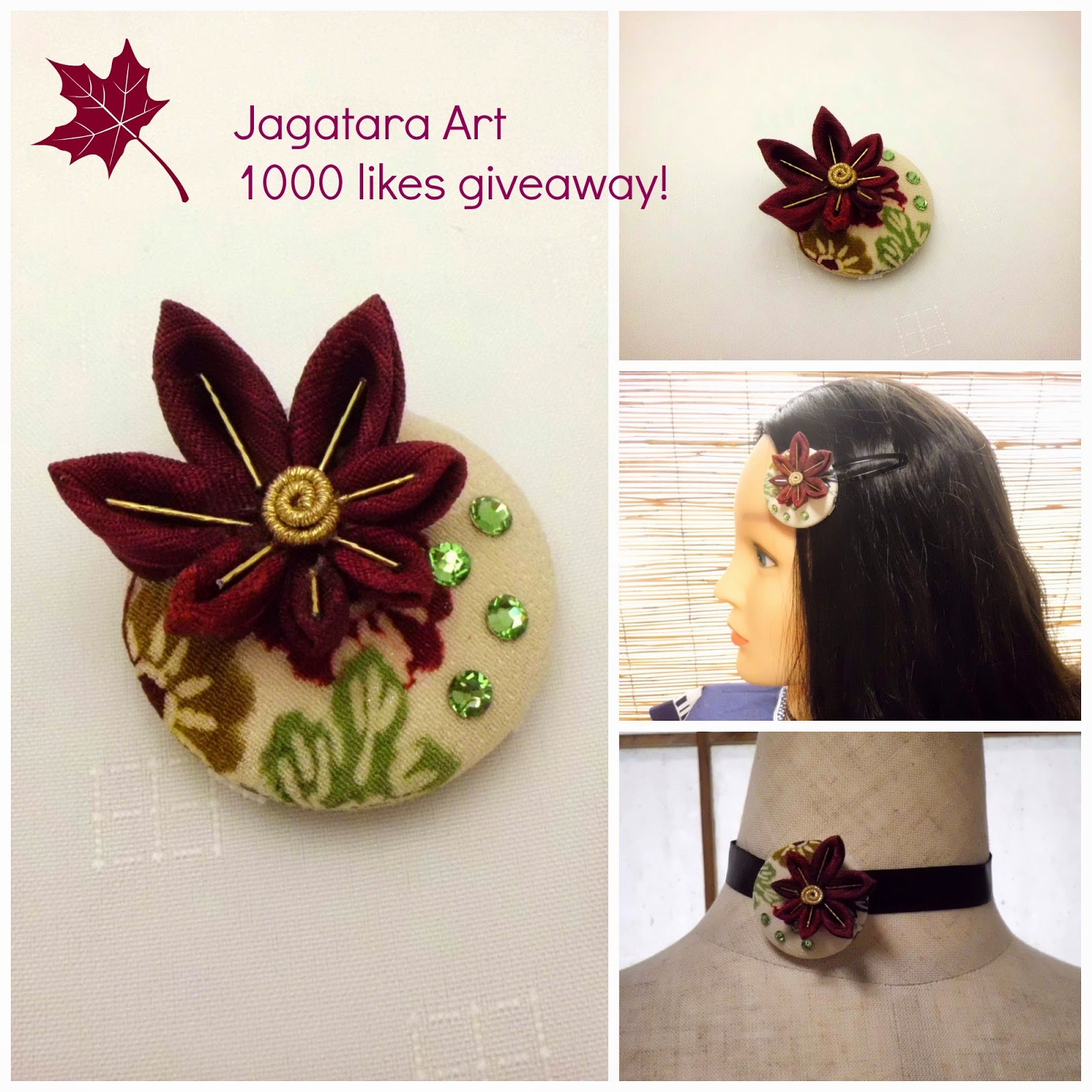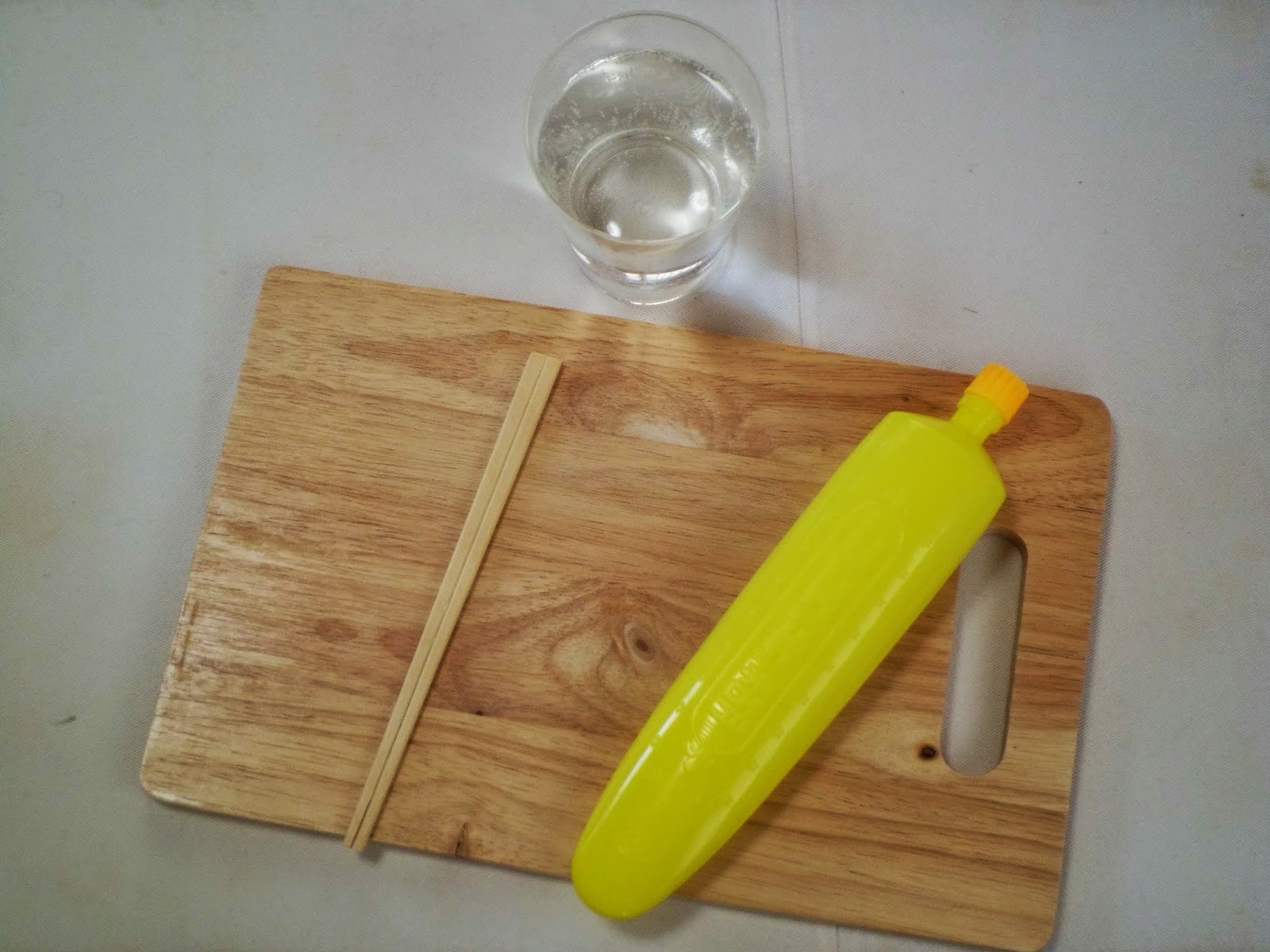I've been meaning to post a tutorial on how to make tsumami kanzashi or tsumami zaiku, but I never got around to it. Or I just simple need to do something for my time management. Hubby says that I'm awful at managing the time :D
Well, the thing was that I couldn't make kanzashi and take pictures at the same time. That's just impossible. So a few weeks ago, I had my husband take some pictures while I was making. And he was happily taking some ^_^
At that time I was making a small kanzashi hair comb consisting of 3 flowers with a sagari dangle.
I'm sorry that this tutorial only covers how to make one flower and not the overall arrangement. However, I hope this will give you an idea to try this by yourself.
First of all, the supplies:
You need some
rice glue paste or
denpun nori in Japanese. It's easy to find in stationary shops or craft supply shops in Japan. However, if you live in a country where denpun nori is not available, you can try making your own rice glue paste. This is the link to how to make it:
How to make rice glue. Then you'll need a
wooden board to spread the glue on. Be resourceful. You don't need a special kanzashi wooden board. Just a wooden board with smooth surface. In my case, I bought my wooden board at a 100 yen shop. It cost me 200 yen or about $2. It's actually a cutting board :) but it works just as well. Also to spread the glue, I just use an unsplit pair of chopsticks. Dip the pair chopsticks (or spatula or anything that works the same) into the water before using it to spread the glue.
Now that you have spread the glue on the board, you can prepare the squares.
You'll need a piece of
fabric. Usually and traditionally, kanzashi crafters use habotai silk or China silk and hand dye it. But I choose to use scraps. The reason is simple: to reduce waste. I'm trying to be as
eco-friendly as possible and besides I have tons of batik scraps and vintage kimonos that my mother in-law happily donates to me from time to time. So, this time I choose a lining from a vintage kimono. Before I cut it into squares, I starched it using
spray starch and ironed it.
Then I cut 15 squares out of it. Each square is about 2.3 cm (a bit less than 1 inch I think).
Next, start to fold the squares. For the flowers I make
round petals. Fold the square in half diagonally. Then fold the right hand corner to meet the bottom corner and do the same with the left hand corner. And then fold the whole piece in half. Most kanzashi crafters hold along the bottom side, but I prefer to hold the corner where all corners meet. Which one is better depends on how comfortable you hold the piece. Finally, put the petal on the glue. Use
tweezers to hold the petals.
To make the leaves, I make pointed petals. The first step is similar to the round petal. Fold the square in half and fold again in half. Again you may grip the petal alongside the bottom or just like I do, only the corner where all corners meet. Finally, place the petal on the glue.
Now, you make the bases. To make a base, cut a round cardboard. Since the square is 2.3 cm, I cut a round cardboard which is 1.5 cm in diameter. Cut also a piece of fabric in circle, slightly larger than the round cardboard, maybe 2 cm or 2.2 in diameter.
Next, pierce a hole in the center of the round cardboard and the round fabric. Take a floral wire and make a small hook on one end. Slide the wire into the hole of the cardboard and the fabric. With a dab of glue, cover the cardboard with the fabric. Prepare also some cut
floral stamens for decoration.
Now, you're ready to assemble the petals. Again, most kanzashi crafters grip the bottom of the petal, while I prefer to hold just the corner. When you've finished placing 5 petals on the base, tidy them and remove the excess of glue gently with tweezers. Note: prepare a
wet towel to clean the tweezers off the glue. Sticky tweezers make it difficult for your to arrange the petals. So, wipe them frequently while you're assembling the petals.
When you're done assembling the petals. Leave the flowers for a
couple of hours to let the glue dry before you add other decorations or
attach them to a
hair clip /
hair comb /
hair stick.
It's hard to determine exactly how many hours, since it depends on the
climate and weather in your place. In my case, in winter it takes me 2
or 3 days. In summer it takes only 3 - 6 hours.
When the glue has dried, now you're ready to attach them. Tie the flowers into one bundle with a string. Then attach the bundle on a hair comb or a hair stick with string. You can add other decorations if you like.
There you have your kanzashi flower.
























































